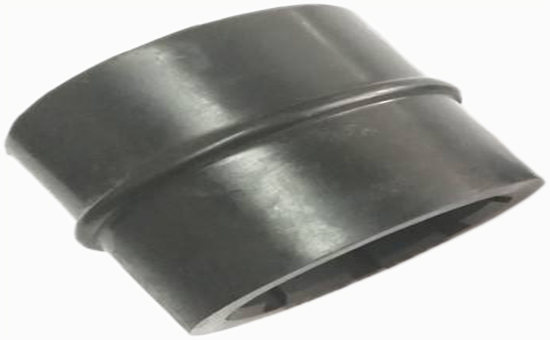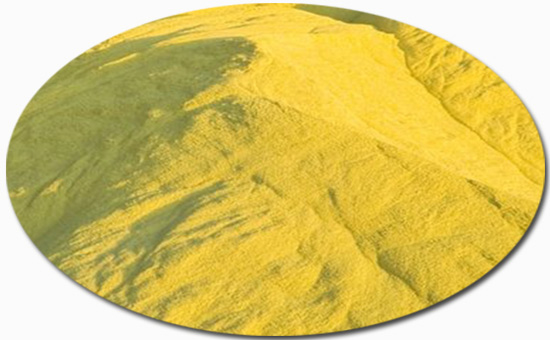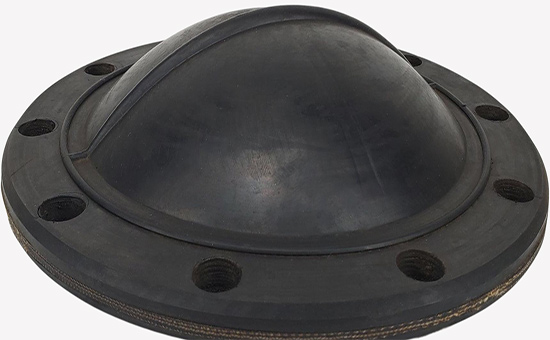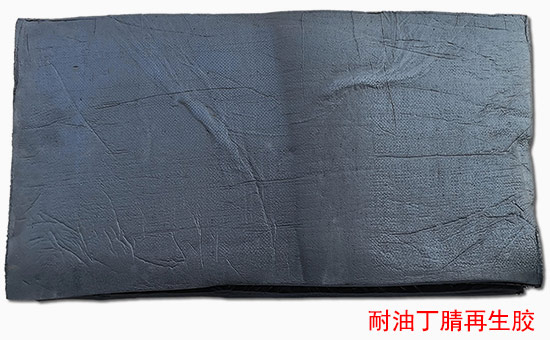
After the nitrile reclaimed rubber is vulcanized with peroxide, the vulcanized rubber has better heat and oxygen aging performance, excellent dynamic fatigue performance, and lower compression set. In actual production, peroxide vulcanization is completely different from sulfur vulcanization. In some applications, peroxide and sulfur must be used together. Among them, sulfur, sulfur-containing compounds and vulcanizing agents will affect the vulcanization of nitrile peroxide vulcanizates.
The vulcanization process of organic peroxides is because the free radicals decomposed by the peroxide bond deprive the active hydrogen atoms of the rubber macromolecules, and promote the cross-linking among the macromolecules. Therefore, when nitrile reclaimed rubber is vulcanized with peroxide, the general compounding agent will have a different effect from the sulfur vulcanization system.

In actual production, sulfur and sulfur-containing compounds will have an adverse effect on the vulcanization of peroxides. In theory, when sulfur is used in the peroxide vulcanization system of nitrile reclaimed rubber, the compression deformation of the vulcanized rubber will increase, the tensile strength will decrease, and the heat resistance will be improved.
When nitrile reclaimed rubber or nitrile rubber/reclaimed rubber is vulcanized with peroxide, a small amount of accelerator M is used in combination with a small amount of zinc oxide and stearic acid to increase the crosslinking density of the vulcanized rubber. During the vulcanization process, peroxide and accelerator M can decompose free radicals, and the interaction of free radicals can improve the crosslinking effect of the rubber compound.

Zinc oxide is the "golden partner" in the sulfur vulcanization system with stearic acid, but it is an unnecessary auxiliary agent in the nitrile reclaimed rubber peroxide vulcanization system. The activator 2YLYY129 in the vulcanization system can be other; stearic acid The acid surface is acidic and affects peroxide vulcanization, so it is not suitable for use. When zinc oxide must be used in the nitrile peroxide vulcanizate, 10% of the amount of zinc oxide can be added to improve the dispersion of zinc oxide in the nitrile reclaimed rubber.
At present, the commonly used organic peroxide for nitrile reclaimed rubber is DCP, that is, dicumyl peroxide. This type of vulcanizing agent is highly sensitive to acid, high in decomposition temperature, and less sensitive to oxygen. It is used for nitrile regeneration. When vulcanizing rubber, nitrile rubber/reclaimed rubber, the amount is generally controlled at 1.5-3 parts; adding an appropriate amount of general-purpose rubber accelerator M, which is easy to disperse and pollution-free in the rubber compound, can further optimize the vulcanization process and the quality of vulcanized rubber .

During the vulcanization process of peroxide-vulcanized nitrile reclaimed rubber, the types and amounts of rubber fillers, softening plasticizers, and antioxidants will also affect the vulcanization process. The editor will have the opportunity to continue discussing with you later.
Exclusive original article [commercial authorization] reprint, excerpt and excerpt in any form are prohibited without written authorization. Focus on Hongyun rubber: learn the process formula and raw material technology of producing rubber products from recycled rubber to help you reduce costs and increase profits